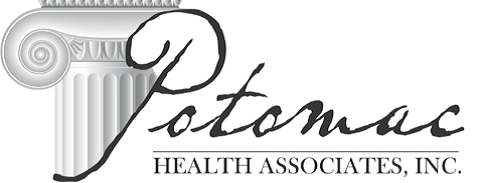The federal government has established numerous procurement policies designed to ensure that agencies provide all practical opportunities for small businesses to compete for their share of federal contract dollars. Understanding how these rules and regulations affect both large and small businesses is critical for successful federal contracting. PHA assists businesses of all sizes and ownership in developing strategies that enable them to take full advantage of the complex rules and regulations that apply to them. We add value to your organization by helping you navigate the maze of rules and regulations quickly, efficiently and successfully.
Small Business Contracting
The SBA is the focal point for the development of rules, regulations and programs that apply to all aspects of small business contracting. Most relevant rules are found in the Federal Acquisition Regulation (FAR). Among the most important concepts to understand include:
Small Business Administration (SBA)

The SBA is the focal point for the development of rules, regulations and programs that apply to all aspects of small business contracting. Most relevant rules are found in the Federal Acquisition Regulation (FAR). Among the most important concepts to understand include:
- Ownership
- Size standards
- Annual revenue
- Agency subcontracting goals
- and Teaming agreements.
By considering all the characteristics above, PHA helps develop strategies that make them more competitive, either as a prime contractor or subcontractor.
Special Standards of Ownership
 Federal contracting recognizes a number of different categories of ownership, including:
Federal contracting recognizes a number of different categories of ownership, including:
- Small Business
- Small Disadvantaged Business
- Socially Disadvantaged Small Business
- Woman-owned Business
- Veteran Owned Small Business
- Service Disabled Veteran Owned Small Business; and
- Historically Underutilized Business Zone.
Each of these has somewhat different rules and regulations. PHA helps its clients understand how these regulations impact their business and opportunities for federal contracts.
Size Standards
The federal government establishes a size standard for almost every contract and solicitation based on the North American Industry Classification System (NAICS) codes. Depending on the NAICS code selected by the Contracting Officer, the size standard is based either on revenue or the number of employees. PHA helps its clients work through these complex rules to verify the appropriateness of the NAICS code selected; challenge the code if inappropriate; determine how to calculate revenue and understand the implication of affiliations upon size. We can also assist your organization with size and/or NAICS code appeals.
Set-Asides
In keeping with policy goals of ensuring that small businesses can compete for their fair share of federal contracts, agencies often set aside contracts for specific categories of business size and/or ownership. Set-asides can be a very powerful mechanism to capture business, as they level the playing field to businesses of the same size and ownership status. Agencies are always supposed to perform market research to see if it can be set aside for small businesses first. Agencies may seek to justify a set-aside, or, justify why it did not set it aside. PHA understands the nature of set-asides, how to take advantage of them, and/or challenge them, if market research cannot be supported.
Veteran-Owned Small Business (VOSB) and Service-Disabled Veteran-Owned Small Business (SDVOSB) Strategies
After years of formal designation of VOSB and SDVOSB status by the VA itself, this process was recently transferred to the SBA. This status affords significant competitive advantages to the organizations that hold them, including the opportunity for contracts to be directed to a specific contractor without competition. PHA has helped organizations apply for formal designation as a VOSB or SDVOSB. Once verified, we work with our client to leverage that status, either as a prime contractor or as an SDVOSB subcontractor.
Mentor-Protege Agreements (MPA)
The MPA program provides an opportunity for small businesses to partner with a large business for mutual benefit. In general, the small business benefits by gaining access to the experience, capabilities, and financial support of the large business. The benefit for large companies is that they are able to use the relationship to claim credit towards achieving small business subcontracting goals. If the parties to an MPA also form a joint venture (JV) with the small business as the managing partner, through the joint venture, a large business can qualify for certain small business set-asides and gain additional evaluation credit for having an MPA, and the small business can take advantage of the past performance of the large business. PHA works with clients to establish MPAs and JVs that comply with the SBA regulations, and determine how to select opportunities where that status gives them preferential treatment.
Verification of Competitor Representations
Companies competing for small business set-asides make numerous claims about their capabilities, experience and status in their proposals. These claims are sometimes inaccurate, exaggerated…or even untrue. Agencies do not always have, or take the time to verify such claims before making an award. If a company wins a contract, in part, by misrepresenting a key representation, either unintentionally or not, PHA helps its clients gather the documentation to verify or dispute such claims. If a key representation is believed to be false, PHA will help challenge the award through the SBA appeals process.
Reach Out To PHA
Call PHA today (703) 851-1780 for more information, or reach out to the experts at PHA about small business contracting strategies.
